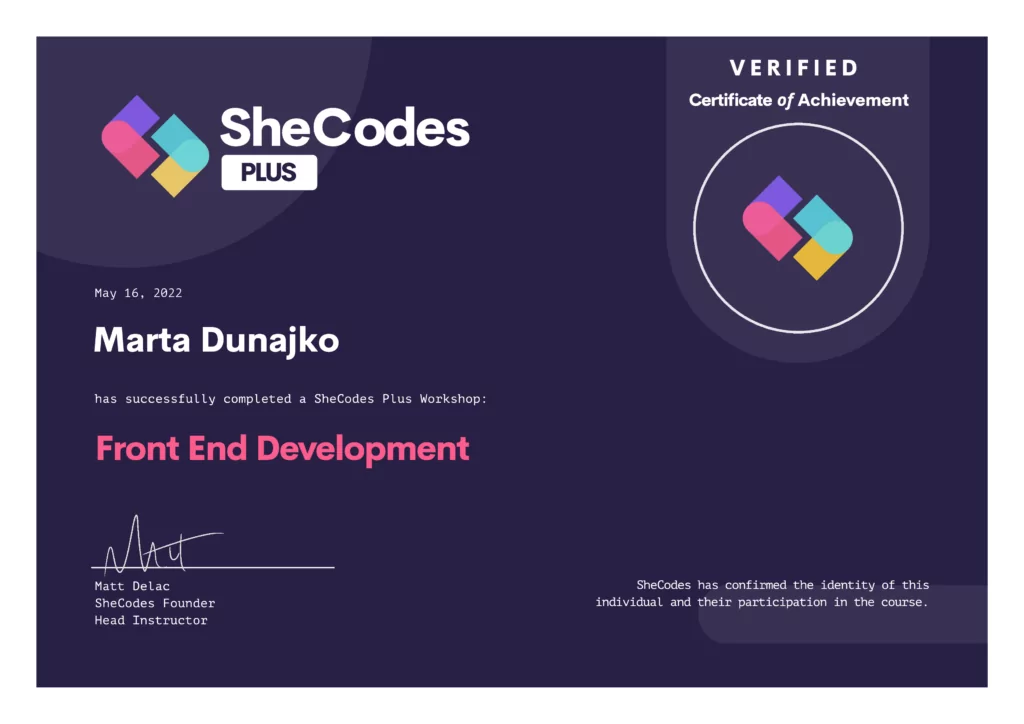Hey, it’s NS’s marketing girl here. I’ve been gearing up for this blog entry for quite a long time, feeling it might be too personal for a company publication, but hey-ho. 😉 So, today, I’ll share my first-hand experience as a non-technical person who finished a coding course for girls. I hope it will be a valuable read if you’re considering an adventure with coding yourself. So, without further ado, let’s get started!
Why coding for women
I decided to spend my last year’s training budget on coding workshops. Having done my research, I decided on SheCodes Plus. It looked like something I’d like to give a try.
You might wonder why the heck one would choose coding for women if there are so many non-gender-specific programming courses. Does coding for girls differ? I think not.
The thing is, the programming community is still highly male-dominated. According to Statista, the ratio is 91,88% of men to 5,17% of women. It is only slightly higher in NeuroSYS, where 6,54% (kudos to you, fantastic ladies!) of the devs are women. So, it might be slightly intimidating for some.
When it comes to workshops, knowing there are so many other girls that succeeded in coding helps to develop confidence that, yes, I can do it too. But, somehow, it also makes it a safe space to ask for help publicly and share your first coding results.
Why take part in coding workshops (if you’re not a dev)
So, why would a non-technical person, a content creator, participate in coding workshops? My motivations behind the move were:
- To write better about technical issues
- Be able to make changes in the copy/commands in our apps
- Be able to apply smaller changes or solve minor issues on our website
- Understand what my colleagues talk or joke about
- Last but not least, gather ideas for blog posts (like this one 😉)
What I’ve learned
So here is what I’ve learned, or at least tried to comprehend:
- Basics of HTML: tags, attributes, classes, containers, and forms
- Basics of CSS: selectors and pseudo-selectors, properties, positioning, and spacing
- Basics of JavaScript: strings, arrays and loops, objects, functions, debugging, selectors, events, forms, and API integration
- Developer tools: CodePen, CodeSandbox, Bootstrap, API, Git, GitHub, hosting, Netlify, Vanilla
I had two final projects to carry out after each part of the workshops, a static website and an application, namely a weather forecast app.
I chose the slower pace of the course, 11 weeks altogether, 5 hrs a week. As it turned out, it definitely took much more than 5 hrs. I worked on lessons, homework, and solving problems almost every day after office hours and during the weekends. I’d rather the pace be slower to be able to memorize and repeat everything. Time restraints were good though, and highly motivating.

How it went
The first part, SheCodes Basics, was easy-peasy and nothing but fun. Building my first website from scratch was wholesome and satisfying. I felt confident that I got it. But then, the SheCodes Plus followed, and it was a horse of a different color. I had my ups and downs, moments of triumph when finding solutions on my own, but also frustrating times when I had to switch to a survival mode (“Why on earth isn’t that working?!”). However, I have put my best foot forward to complete the course, and I did.
The foremost thing that I’ve learned was that you have to be a problem-solver to code well. There are plenty of ways to make things work in app building that can lead to the same result. If you naturally enjoy digging for answers, and getting into debates with devs at various forums, this might be a good career path for you. Excellent memory of commands and functions will also give you a hand with faster coding. Keep in mind that someone will take your code over one day, so you make it clean and understandable.
Will I become a developer?
I decided to end this entry with the inane question that many asked me when I told them I was learning how to code. In the first place, becoming a dev was never my aim. Although, I admit, if I felt I’m cut out for coding, I might have committed to it. But I was not. Still, I do not think of the two months as a waste of time. Though I was cursing a lot during the process, I can heartily recommend the experience.
I hope you didn’t mind me sharing my personal experience on a company blog. I wish you much patience and of course fun with coding, if that’s what brought you here. Cheers!






